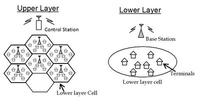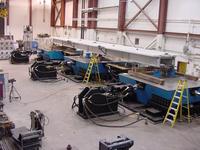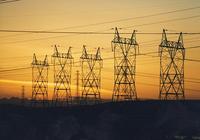-
Howard County, Md. attracts cybersecurity firms
Howard County, Maryland boasts a growing presence of cybersecurity firms and specialists at a time when the industry is gaining attention. The proximity of the county to government agencies has helped cybersecurity firms gain federal contracts, and the proximity of large cybersecurity consumers like the NSA offers cybersecurity firms in Howard County a large pool of cybersecurity specialists to select from when NSA employees decide to shift to the private sector.
-
-
Computer simulations help predict blast scenarios
Simulation-based engineering science (SBES) allows researchers to predict the effects of building explosions and analyze the response of building materials to those threats. Using a $400,000, five-year CAREER grant from the National Science Foundation, researchers developed the Material Point Method (MPM) a computer-generated tool which not only creates blast scenarios that informs blast and impact resistant materials and design, but also is crossing over into Hollywood animation — most recently, Disney’s Oscar-winning animated film, “Frozen.”
-
-
Planning for future ecological challenges
How can communities dodge future disasters from Mother Nature before she has dealt the blow? Researchers are taking a unique approach to the issue and gaining input and support from community stakeholders. Researchers conducted a series of one-on-one interviews at Big Hole Valley in Montana and Grand County in Colorado to get an array of community contributors thinking and planning for future ecological hazards, and to consider the impact of those decisions.
-
-
Storm surges, rising sea levels threaten New Jersey’s beach-centered tourism industry
Sea level at the Jersey Shore could rise by thirty-one inches by the year 2050, posing a threat to New Jersey’s $38 billion tourism industry. Experts say that the potential for more harsh storms and sea level rise calls for better promotion of what else New Jersey has to offer tourists aside from the beach.
-
-
NERC drill finds U.S. grid preparedness insufficient
The North American Electric Reliability Corporation (NERC) reported that its recent GridEx II exercise has highlighted the fact that nearly all the utilities which took part in the two-day drill last November – a drill aiming to test the preparedness of the U.S. power grid to withstand cyber and physical attacks – admitted that their planning for such attacks was insufficient. NERC’s president, Gerry Cauley, said that protecting utilities against cyber and physical attacks should be considered in the context of measures taken to protect the grid from other threats. He noted that utilities are already hardening their systems against storms like Hurricane Sandy, while working to determine their vulnerability to solar activity that changes the earth’s magnetic field.
-
-
Washington, D.C. area leads nation in cybersecurity jobs

The Washington, D.C metropolitan area had more than 23,000 cybersecurity job postings in 2013, making the region the leading destination for cybersecurity jobs, followed by the New York metro area with 15,000 cybersecurity job postings in 2013. On a state-by state basis, Virginia ranks second and Maryland ranks sixth, with Virginia reporting 25.1 cybersecurity job postings per 10,000 residents and Maryland posting 18.1 jobs per 10,000 residents.
-
-
U.S. infrastructure vulnerable to “cascading system failures” caused by weather disasters
Two U.S. government reports released last Thursday warn that U.S. infrastructure is vulnerable to the effects of climate change. One report focuses on energy, the second on infrastructure more generally. The infrastructure-focused report is the first attempt to review climate implications across all sectors and regions. The report analyzes how damage to one infrastructure sector can impact other infrastructure sectors, rather than isolating specific types of infrastructure. The authors warn that climate-fueled weather disasters could cause “cascading system failures” unless changes are adopted to minimize such effects.
-
-
East Europe’s natural gas networks vulnerable during conflicts and crises
Gas networks in Eastern European countries, such as Ukraine and Belarus, are less resilient than the U.K. gas networks during conflicts and crises, according to new research. The authors suggest that a decentralized approach to managing congestion on gas pipeline networks could be crucial for energy security during geopolitical conflicts or natural disasters, for example.
-
-
Iona College to Launch BS, BA, MS concentrations in cybersecurity
Iona College announced the launch in fall 2014 of undergraduate and graduate programs in computer science with a concentration in cyber security. The concentration will be offered for the Bachelor of Science, Bachelor of Arts, and the Master of Science degrees. The programs will provide students with fundamental cyber security skills, theoretical as well as hands-on experience. Students are exposed to new research ideas across many cyber security areas including software security, Web application security, mobile security, networking security, database security, and cryptography.
-
-
FERC orders development of physical security standards for transmission grid
The Federal Energy Regulatory Commission (FERC) on Friday directed the North American Electric Reliability Corporation (NERC) to develop reliability standards requiring owners and operators of the Bulk-Power System to address risks due to physical security threats and vulnerabilities.
-
-
2011 Oklahoma human-induced earthquake may have triggered larger quake
In a new study, scientists observed that a human-induced magnitude 5.0 earthquake near Prague, Oklahoma in November 2011 may have triggered the larger M5.7 earthquake less than a day later. This research suggests that the M5.7 quake was the largest human-caused earthquake associated with wastewater injection.
-
-
Accelerated urbanization exposes French cities to increased seismic risk
Old structures, designed before current seismic building codes, abound in France, and there is insufficient information about how they will respond during an earthquake. French researchers have looked into data mining to develop a method for extracting information on the vulnerability of cities in regions of moderate risk, creating a proxy for assessing the probable resilience of buildings and infrastructure despite incomplete seismic inventories of buildings. The research exposes significant vulnerability in regions that have experienced an “explosion of urbanization.”
-
-
Safeguarding networks when disasters strike

Disasters both natural and human-caused can damage or destroy data and communications networks. Several presentations at the 2014 OFC Conference and Exposition, being held 9-13 March in San Francisco, will present new information on strategies that can mitigate the impacts of these disasters. Researchers created an algorithm that keeps data safe by moving or copying the data from data centers in peril to more secure locations away from the disaster. The algorithm assesses the risks for damage and users’ demands on the network to determine, in real-time, which locations would provide the safest refuge from a disaster. Other researchers suggest that if fiber-optic cables are down, wireless communication can fill the void and be part of a temporary, emergency network. For such a system to work, however, wireless technology would have to be integrated with the fiber-optic network that transports data around the world.
-
-
Large shake tables expands capabilities of U Nevada, Reno’s quake engineering lab

When it opens, the University of Nevada, Reno’s new Earthquake Engineering Laboratoryt will join with the internationally renowned Large-Scale Structures Laboratory to comprise the largest and most versatile structural engineering experimental facility in the United States. Researchers at the facility will conduct research aiming to test new designs and materials that will make buildings, bridges, and highways safer.
-
-
Experts call for a new organization to oversee grid’s cybersecurity

In 2013, U.S. critical infrastructure companies reported about 260 cyberattacks on their facilities to the federal government. Of these attacks, 59 percent occurred in the energy sector. A new report proposes that energy companies should create an industry-led organization to deflect cyber threats to the electric grid. Modeled after the nuclear industry’s Institute of Nuclear Power Operations, the proposed organization, to be called the Institute for Electric Grid Cybersecurity, would oversee all the energy industry players that could compromise the electric grid if they came under a cyberattack.
-
- All
- Regional
- Water
- Biometrics
- Borders/Immig
- Business
- Cybersecurity
- Detection
- Disasters
- Government
- Infrastructure
- International
- Public health
- Public Safety
- Communication interoperabillity
- Emergency services
- Emergency medical services
- Fire
- First response
- IEDs
- Law Enforcement
- Law Enforcement Technology
- Military technology
- Nonlethal weapons
- Nuclear weapons
- Personal protection equipment
- Police
- Notification /alert systems
- Situational awareness
- Weapons systems
- Sci-Tech
- Sector Reports
- Surveillance
- Transportation
Advertising & Marketing: advertise@newswirepubs.com
Editorial: editor@newswirepubs.com
General: info@newswirepubs.com
2010-2011 © News Wire Publications, LLC News Wire Publications, LLC
220 Old Country Road | Suite 200 | Mineola | New York | 11501
Permissions and Policies
Editorial: editor@newswirepubs.com
General: info@newswirepubs.com
2010-2011 © News Wire Publications, LLC News Wire Publications, LLC
220 Old Country Road | Suite 200 | Mineola | New York | 11501
Permissions and Policies
